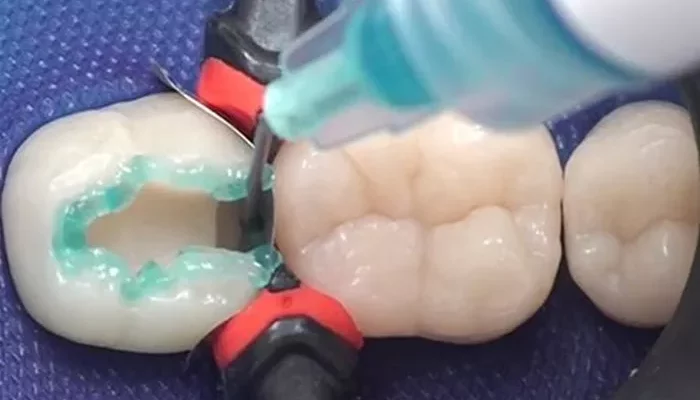Dental fillings are commonly used to restore teeth that have been damaged by decay, wear, or trauma. Over time, these fillings may need to be replaced due to wear, recurrent decay, or other issues. Removing old fillings is a critical step in the process of placing new ones, and it requires a delicate balance of precision and care. This guide aims to provide a comprehensive overview of the process of removing old fillings, including the tools and techniques used, the steps involved, and the potential risks and complications associated with the procedure.
Understanding the Removal Process
Before discussing the specifics of how old fillings are removed, it’s important to understand the types of fillings that may need to be replaced. Fillings can be made of various materials, including amalgam (a mixture of metals including mercury, silver, tin, and copper), composite resin (a tooth-colored plastic material), glass ionomer cement (a material that releases fluoride to help prevent decay), and porcelain or gold inlays/onlays (custom-made fillings that fit precisely into the damaged area of the tooth).
The removal process will vary depending on the type of filling being replaced and the extent of damage to the tooth. In general, the dentist will use a combination of hand instruments, drills, and other tools to carefully remove the old filling while preserving as much of the healthy tooth structure as possible.
Preparation and Anesthesia
Before beginning the removal process, the dentist will numb the area around the tooth using a local anesthetic. This ensures that the patient feels no pain or discomfort during the procedure. The dentist may also place a dental dam, a small piece of rubber or latex that isolates the tooth from the rest of the mouth, to keep the area clean and dry.
Removing the Old Filling
Once the area is numb and isolated, the dentist will begin the removal process. If the filling is made of amalgam, the dentist will use a drill to break it up into smaller pieces, which can then be easily removed with hand instruments. Composite resin fillings, on the other hand, may be softened with a special instrument or chemical and then carefully scraped away.
In some cases, the dentist may need to use a bur (a rotating cutting instrument) to remove any remaining decay or damaged tooth structure. This step is crucial to ensure that the new filling will fit properly and provide a durable restoration.
Preparing the Tooth for the New Filling
Once the old filling has been removed, the dentist will thoroughly clean the tooth and remove any debris or bacteria. The tooth may also need to be shaped to provide the proper support for the new filling. This may involve removing additional tooth structure or creating retention forms, which are small grooves or undercuts that help hold the new filling in place.
Placing the New Filling
After the tooth has been properly prepared, the dentist will begin placing the new filling. The specific steps involved will depend on the type of filling being used. For example, amalgam fillings are mixed and placed in layers, while composite resin fillings are applied in layers and shaped and polished to match the surrounding tooth structure.
Post-Procedure Care
After the new filling has been placed, the dentist will check the patient’s bite to ensure that it is comfortable and that the filling is not too high or low. The patient may experience some sensitivity or discomfort in the area for a few days after the procedure, but this should gradually improve as the tooth heals.
Potential Risks and Complications
While removing old fillings is generally a safe and straightforward procedure, there are some potential risks and complications that patients should be aware of. These include:
Tooth Fracture: Removing old fillings, especially those that have been in place for a long time, can weaken the tooth structure. In some cases, this may lead to a tooth fracture, which may require additional treatment, such as a crown or extraction.
Infection: If the tooth or surrounding tissues are not properly cleaned and disinfected before placing the new filling, an infection may develop. Symptoms of an infection may include pain, swelling, and fever.
Sensitivity: Some patients may experience sensitivity or discomfort in the area for a few days or weeks after the procedure.
This is usually temporary and can be managed with over-the-counter pain medications or sensitivity toothpaste.
Allergic Reactions: Although rare, some patients may be allergic to the materials used in dental fillings, such as amalgam or composite resin. If an allergic reaction occurs, the patient may experience symptoms such as itching, swelling, or difficulty breathing.
Conclusion
Removing old fillings is a critical step in the process of restoring damaged teeth. While the procedure may vary depending on the type of filling being replaced and the extent of damage to the tooth, it generally involves numbing the area, isolating the tooth, carefully removing the old filling, preparing the tooth for the new filling, and placing the new filling. Patients should be aware of the potential risks and complications associated with the procedure and follow their dentist’s instructions for post-procedure care to ensure a successful outcome. With proper care and maintenance, new fillings can last for many years, providing a durable and effective restoration for damaged teeth.
Related topics:

